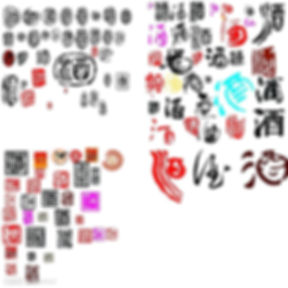D'Arenberg Coppermine Road Cabernet Sauvignon 2003, McLaren Vale

Very special Cabernet nose (plums, capsicum, green pepper, steak sauce, cedar, leather and tobacco). Beautifully aged, with rippling tannins driving the fruit along. Long finish; medium bodied; drinks on and on; never stomach-filling. Turned from varietal characters to terroir.
Fellow tasters with across vintage experience (from 2012 to 2004 Coppermine Road) say that this wine in their younger years always show tones of violet and anise perfume, concentration and great acidity. Chester Osbourne, with whom we met in 2002 together with Hamish Laurie, reminded us about the Coppermine Road character of beautiful line of fruit, some fruit sweetness, a hint of chocolate and raspberry perhaps with a nutty savoury edge. Tannins are chalky and long but the lasting impression we get is one of fruit.

Quite some documentation on this little wine, about which Tasting Team would summarize as follows:
From extinct clone, this unnamed Cabernet clone because of its very poor setting ability and the tiny size of its berries. 2003 production for is further down because of the very low winter rainfall which signaled the vine to minimize potential crop load. This clone with the top soil produce big wines with substantial fragrance while the Marley limestone underneath serves to reduce vigour in the vine. As this clone retains its acidity longer than other clones we are able to leave the fruit hanging on the vines longer. So we see in 2003 a long harvest period from mid March to early May! These parcels of fruit that we leave on the vine are able to develop more intense flavours without risking a drop in acidity.
Why a little green than most McLaren Cabernets? The Cabernet vineyards performed extremely well due to the density of leaf area within the canopy which retained itself all the way through to picking. This contributed to the retained herbaceous and leafy characteristics
Why so structured and fine palated? The ripening period was warm producing a crop load of small berries and very pure, ripe fruit characters. However, the quality of the grapes is far superior, with wonderful violet and blackcurrant aromas, great acidity and long, intense fine- grain tannins. Higher skin-pulp ratio has further improved the quality of the structure and is evident by the level of concentration in this wine
WineMaking, Whole bunch press; open Fermenters; openmouthed, rubber-toothed crusher so as many of the berries as possible remain whole then transferred to open fermenters where the must of seeds and skins are permanently submerged beneath the free run juice. The must receive no plunging or pumping over while fermenting occurs. Once the primary fermentation is nearly complete, traditional foot-treading takes place prior to basket-pressing. The wine is then transferred to barrel(American and French) to complete its primary and secondary fermentation. Only the barrels from the best batches are selected after 18 months for the final blend. That's why the palate is soft, chalky, with excellent fruit line still.
Notable comments:
The spicy 2003 The Coppermine Road Cabernet Sauvignon (aged in equal parts new French and new American oak) reveals copious quantities of black currants, cedar, vanilla, and white chocolate aromas, followed by spicy, tannic, full-bodied, powerful, dense, well-structured flavors. It should drink well for 10-15+ years. RP 94
No doubting the region; black chocolate surrounds the blackcurrant fruit centre; good tannin and oak management. JH 94
A very well balanced and composed, but distinctively assertive cabernet. Its floral aromas of violets, dark plums, blackcurrants and dark olives are backed by dark chocolate, cedary oak and suggestions of mint. Smooth and sumptuous, its powerful and robust pal. JO93






















